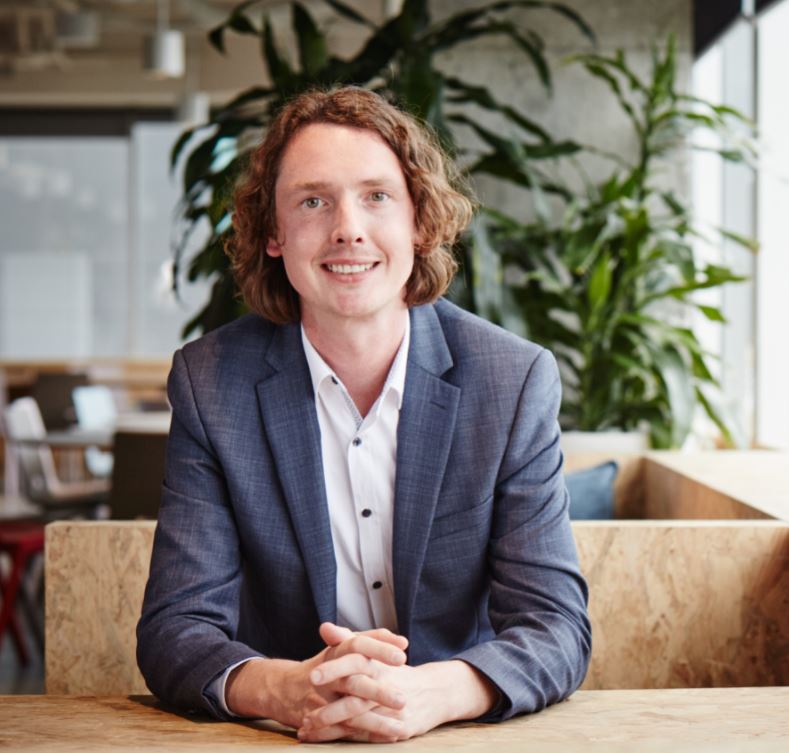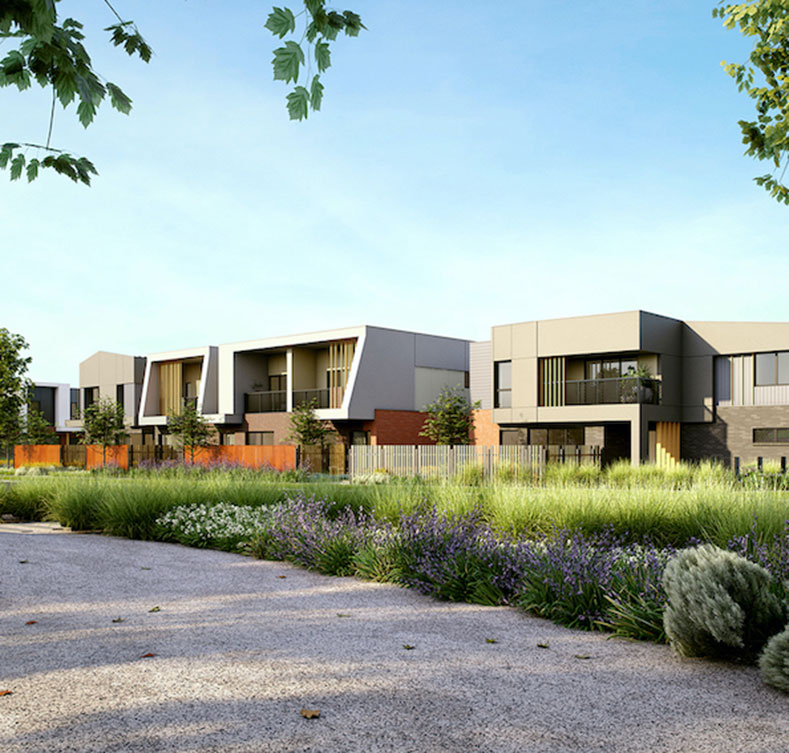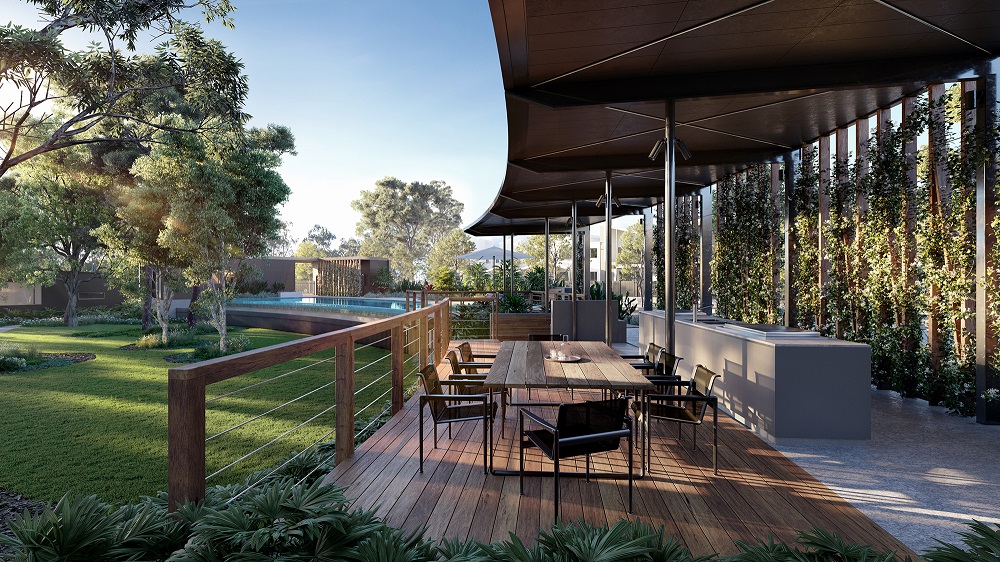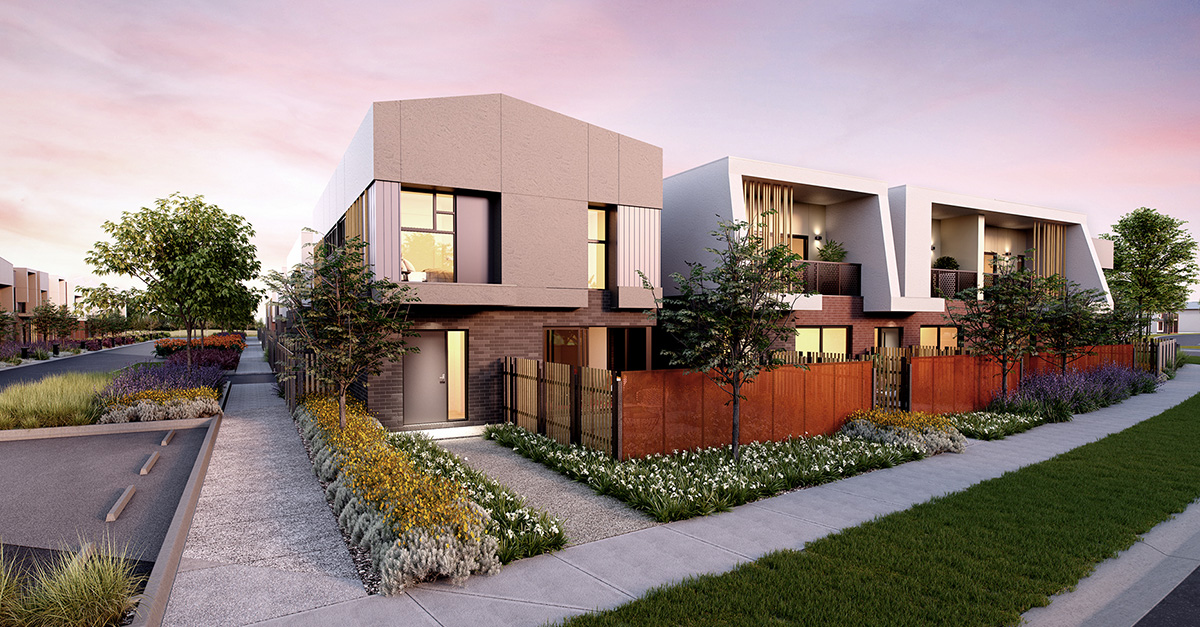Oct 01 2020, by Fleetwood Urban (Marketing)
Developing the value
Sustainability Manager, Rory Martin, discusses the challenges, opportunities and inspirations from his role with Frasers Property Australia
He’s a registered architect with a Masters of Science in Environmental Design. For the past four years, Rory Martin has been putting his expertise into good practice, guiding Frasers Property developments across Australia towards industry-leading sustainability outcomes, whilst also overseeing an enviable array of pilot programs. As Martin explains, the secret to success isn’t focusing on cost, but value.
FWD: Rory, how would you define ‘sustainability’ in the built environment?
RORY MARTIN: Sustainability, by its nature, is a generic word. We apply it to so many different things and I think that’s why we sometimes struggle. If you look at the old school definition, sustainability is really just making sure we can provide for those who come after us; the idea that we don’t inherit the earth from our ancestors, but borrow it from our children. That really resonates with me. In terms of what that means for us at Frasers, we’re in a very privileged position where we get to shape communities and the environments people live, work and play in. It’s important to make sure we’re doing the right thing by them.
FWD: What’s more important when it comes to sustainability – the big things or the small things?
RM: People often look for the grand gestures. While these can be very important in showing the way forward, just as important is what’s happening on the ground. I believe the best form of sustainability is by stealth. It’s those hundreds of little touches that just make places better, less resource intensive and allow things to work more efficiently.
FWD: How important is education in your role with Frasers?
RM: There’s always a degree of capacity building because the sustainability space is always evolving. The challenges of today will be different tomorrow. Technology is evolving at breakneck speed, our own understanding of climate, people and their interplays is always changing. Back when I was consulting, typically you might pitch an idea around sustainability and the question you’d always get is ‘how much is it going to cost’? When I joined Frasers in 2016, their first question was ‘what’s the value?’ It’s a subtle difference, but a major one. Don’t get me wrong, cost is probably still the second or third question that gets asked! But if you can articulate and demonstrate the broader value, then the team will align behind it and we’ll work through the rest of the challenges together. Of course, the other thing about value is how you translate it, from something that’s often highly technical into something people can easily understand.

Rory Martin

Passive House, a Frasers Property sustainability pilot program
FWD: As a Sustainability Manager, what are some of the biggest obstacles you come up against?
RM: Perception is probably the greatest challenge, especially around people and customers not completely valuing sustainability – many still aren’t willing to pay for it. But the more interrogation we do, sitting with our customers to understand and translate what they perceive to be sustainability, you start to overcome these barriers and begin to unlock huge potential.
One example was a development where we had no ingrained sustainable building commitments. The Frasers project team could see some of the innovations being used on our other projects and felt maybe they had the capacity to do the same. To see if the argument stacked up (commercially), they took questions of sustainability and certification to the customers, and what they found was many were very willing to pay a premium if they were able to get a better quality apartment, one that was more energy-efficient with things like better natural lighting and acoustics. They became a lot more interested after that!
FWD: So, it’s really just a matter of quantifying the benefits of sustainability in ways customers can understand?
RM: It comes down to the individual. For some people, the vision is enough. They want a sustainable home without looking at anything else. For others, maybe investors and those who are more financially literate, they want to see the numbers. Then there are people who want to see and experience it, they just want to walk into the sales suite or a home and actually feel it. We find we have to translate our messages for each of these groups, so it really is a multipronged approach.
FWD: Where do you think we are right now on the ‘sustainability bell curve’?
RM: The momentum is certainly growing. A lot of that is due to the fact we’re getting better at articulating the value proposition. One of the other things we’ve been doing recently is looking at the airlines and the way they manage their offset programs. That’s been very interesting because, when you look at residential development, there’s a large amount of carbon emissions associated with building and operating a home.
FWD: So you’re looking to a completely different industry for insights and potential solutions?
RM: That’s right. We did some simple research into what Virgin and Qantas were doing with their offset programs and could see they were averaging a take-up rate of between 10-15% (pre-Covid). Then we asked what would that look like in a Resi setting? To find out, we identified a project up in Brisbane called Minnippi Quarter and we’re currently piloting a scheme where, at the point of purchase, the customer can elect to offset the carbon associated with building their home. The program is fully certified by Climate Active, the Federal Government scheme, so there’s real credibility behind it.

FWD: How has it been received?
RM: The program only launched six weeks ago, but the response has been really positive, a lot of people are engaging with it. For us, it demonstrates people are interested (in more sustainable homes) and they’re willing to put their hand in their pocket. Obviously, we hoped that’s what would happen, but there’s a real sense of proof of concept now. The next question is, how do we take the carbon offset idea to another level? How do we become more targeted? How do we refine the messaging? Clearly, offsets are only part of the solution of course, the primary goal is still to reduce as much carbon as we can through design. But it’s something that will help us manage that curve towards ‘carbon zero’, so it’s an important step.
FWD: What are some of the other interesting projects you’ve been working on?
RM: While its not one I’ve been heavily involved in, the Burwood Brickworks in Melbourne would be one of the most exciting projects we have on the books. It’s targeting a certification system called the Living Building Challenge®. It’s a retail centre that opened just before Christmas last year, and the majority of its energy needs are being managed through both on-site and off-site renewables. It has a black water treatment plant, it’s managing waste on site, it has a rooftop farm where the local restaurants are able to grow a lot of their produce. It’s quite a flagship project and a really good example, certainly on the retail side, of what’s possible.
FWD: What about your residential communities?
RM: We have quite a few interesting rods in the fire when it comes to housing. There’s the carbon offset program we’ve already talked about. We’re also building over 800 geothermal homes at Fairwater in western Sydney, where we’re using ground-sourced heat pumps to provide heating and cooling as opposed to traditional split systems. We’re currently evaluating the performance of ARENA Government Funding and the support of Climate KIC, UTS and Curtin University, among others.
Also in New South Wales, we’re also looking at the concept of ‘zero energy’ homes in another development. It’s more of a technology-focused solution, with the homes designed to generate as much energy as they consume over a 12-month period. Another really interesting trial is happening at Life, Point Cook in Melbourne as part of something called the ‘Passive House’ program. For that, we’ve taken two town homes which are identical in orientation and design. One is being up upgraded to Passive House standard and the other is being built traditionally. They will both look the same and, when they’re finished, we’re going to monitor their energy performance for 12 months and have an ‘apples for apples’ comparison.
With all of these programs, our intent is that within the next 2 to 3 years we’ll have some fantastic Resi data so we can actually find out what works best when it comes to sustainability, and why.

FWD: Rory, just before we finish up, what kinds of things do you imagine might be happening in the sustainability space in 20, 30 or even 50 years from now?
RM: Going right back to my early architecture days, we’ve traditionally designed and built in isolation. I think in the future we’re going to become far more interconnected. We’re already seeing the evolution of micro grids, district energy systems, district water systems and more sophisticated plays on how we manage our waste. We’re going to see a lot more consideration given to precincts and buildings being able to ‘plug and play’ and a big part of that is social connection, physically but also digitally. I really feel we’re going to become far more connected through both hard and soft infrastructure.



